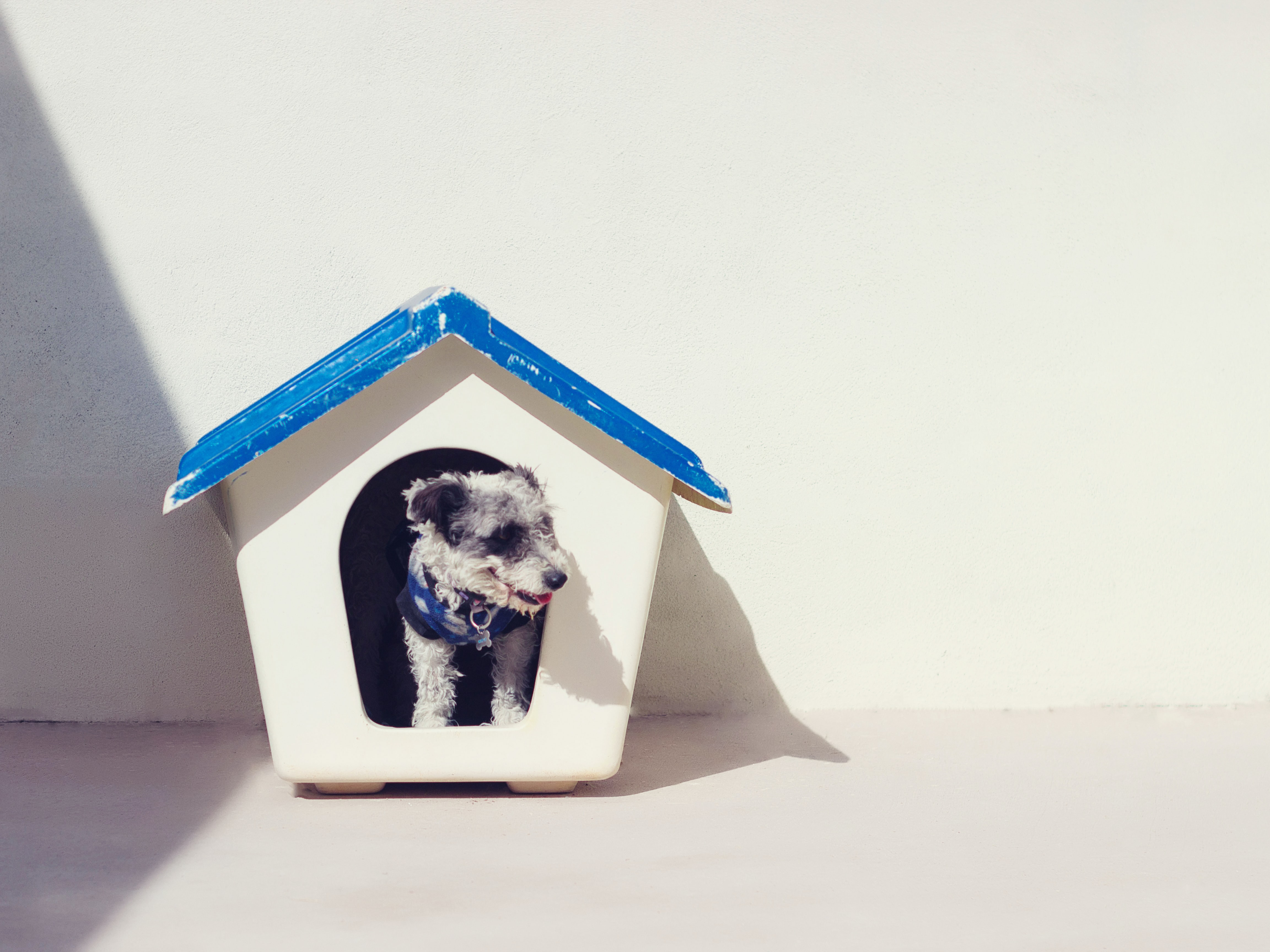
If you share your space with animals, chances are you’ve seen them get spooked by something. Whether you have an antisocial cat or a dog that hates the sound of thunder, our pets are just as likely to be scared and stressed by the same kind of things that we are. Sudden noises, unfamiliar visitors and situations, or a whole list of other things.
This will largely depend on your pet and their past experiences. With sensitive ears and noses, most pets hate sudden loud noises or extremely unfamiliar experiences. However, some pets with unfortunate past experiences may be even more sensitive to discomfort. Typically, this will express itself in a variety of ways, many of which are related to their fear response.
Now, dogs with a particularly sensitive fear response can be a handful. They may lash out, retreat, experience incontinence, or behave very differently from their usual self when they react to fear. And that’s okay! With a little bit of training and support, you can successfully manage your dog’s fear response. It will help you avoid a messy situation, and most importantly, it will be less stressful for your dogs.
Setting a Pattern of Fear Response Management

1. Observe and Understand Your Pet
To start, you’ll want to pay close attention to what sets your dogs off. Is it fireworks and thunderstorms? Or do they get aggressive every time someone walks by the house or knocks on the door? Whatever it is, pay close attention to how your pet reacts. If they’re raising their hackles, barking far more than usual, or showing other aggression signs, it’s an easy way for you to spot when they’re afraid or agitated and tell it apart from more standard dog behavior.
Once you notice the signs in your pet, pay attention to what sets them off. Is it strangers knocking at the door, or do even familiar people frighten them? Learning more about what your pet reacts to and how they react is all about setting a foundation for changing negative behavior and helping to manage their fear and stress.
2. Establish Clear Commands
One thing you’ll want to do early on for any kind of pet training or management is to establish commands that your pet will actively follow. This allows you to establish a kind of routine response to whatever situation your dog is reacting to, and animals are particularly good at following a routine.
Verbal commands work best for dogs, and even if it takes awhile to find the right words or forms for the commands, it’s important to establish them early in the training. While at first you may have to repeat something 20 times, it’s more about getting your dog to associate the command with the process of calming down and feeling safe that follows.
Remember, your pets can be sensitive to your moods and actions as well. If you’re already trying to calm down a stressed or aggressive dog, yelling and responding with more aggression will not reinforce positive behavior. You can’t respond to your pets fear by creating more fear, but you do need to be firm so your pet can recognize consistency.
3. Create a Safe and Comfortable Environment
For many pets, having a space of their own is less about owning a territory and more about having a safe retreat within the home. You may notice in particular with cats that they often run to or sleep in the same place. For your cat, this space is their ‘safe place’ which they use to both navigate the home and to retreat to in response to whatever stimulus they’re facing.
For dogs, it’s not dissimilar. You want to have a safe and comfortable environment and establish that as the norm. For you to successfully manage your pets fear response, they must first feel comfortable and safe as a baseline. For most long term pet owners that take care of their pets, that’s already fairly established in the home. However, for new pet owners, people adopting more animals, or pets that experience a traumatic event, you may need to take extra care to create a safe environment according to the needs of the pet in question.
A good example is the kennel or cage. Some pets feel very comfortable or well conditioned to retreat to their cage for sleep or comfort when they feel stressed. However, if you’re caring for an animal that was abused or kept in a cage that was too small, a cage may simply trigger their fear response and negatively impact the process.
4. Slowly Expose Your Dog To Change
Once you’ve set up a comfortable environment and managed to get your dog to adhere to commands, you can begin the work of changing their behavior little by little. The main way to do this is by exposing them, if possible, to the triggers that alert them.
You’ll have to adjust your methods based on the trigger in question, as some will be easier to manage than others. For example, if your dog is anxious and barks whenever someone knocks on the door, begin small exercises that get them used to someone knocking on the door or entering the house.
Place yourself in a position between the trigger and the dog to start, assuming that your dog is not violently reactive to that trigger. This physical spacing, in conjunction with the commands they learned earlier, can make dogs feel more comfortable because of your presence. As time goes on, slowly increase your pets exposure while reducing your presence until you reach whatever level you and your pets are comfortable with.
- Note
It’s important to note that not all triggers are easy to familiarize your pets with, and if your pet is particularly aggressive towards certain experiences or people, this training may not be effective or safe.
Thunder and fireworks, for example, may be hard to replicate or train your dogs to endure. Loud sounds on sensitive ears will forever be an issue, and behavioral training might not improve their reactions much there.
If your dog is aggressive, and snaps, bites, or barks at others in proximity or other animals, you’ll have to proceed with caution and it may be best to consult your vet for advice on how to handle particularly violent behaviors. A general rule is that you don’t want to endanger yourself, anyone else, or your pets in an attempt to correct behavior.
Depending on the severity of need and individual local rulings, grooming and lower level clinics may be considered ‘non-essential’ or have decided individually not to remain open. If your pet is the type that needs frequent grooming, or if you were about to hit the usual time of year for occasional grooming, you should prepare to switch services or have an unkempt pet on your hands.
5. Alternatives to Correction
As we’ve just mentioned, not all behaviors or triggers are well matched to behavioral correction and training. When this kind of training is ineffective or impossible, the best solution is to find a means of mitigating your pets negative experience however possible.
Returning to the idea of creating a comfortable environment, find actions or other solutions to pet anxiety. Looking again at storms and loud noises, find or create a quieter space in your home. For some pets, being near you may be enough. For other pets, having a blanket, or a room that dampens sound more effectively, or a toy they hold on to for comfort may improve their experience.
Take care, however, that you don’t hinder or inhibit your dog in any way. Weighted blankets, for example, do not have any study based success in helping dogs the same way they help humans, and if a blanket or kennel or closet is too small or too heavy it may stress your dog out more.
Managing your dog’s mental health is just as important as handling their physical health. Fortunately, with a little time and training, many dogs can become more comfortable with the unfamiliar, reducing their stress and fear-based outbursts over time. As always, it’s a good idea to discuss changes to routine and behavior with your vet. They may be able to help you adjust the routine or provide alternative solutions for helping your dog live a happier, more comfortable life.
Complete care for pets of every size
At BCP Veterinary Pharmacy, we supply veterinarians and pet owners with the medication to care for all animals, no matter how big or small. Take a look at our products and place your order online.


